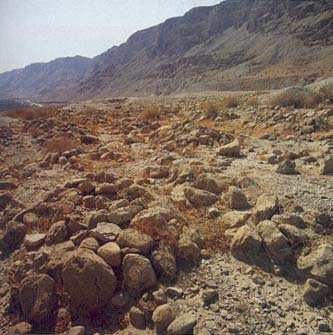Image Details

David Harris
Heaps of stones mark Qumran’s graves, which lie close together in neat rows, oriented in a north-south direction, on the western side of the desert site. Only 49 of the 1,200 graves at Qumran have been excavated. They are almost identical to the Beit Safafa shaft graves in size, shape and simplicity—as can be seen in the cross-sections of Qumran grave 28 and Beit Safafa grave 110. The openings to each grave are about 2 by 7 feet, and the shafts range from 5 to 7 feet deep; a horizontal burial niche, covered by a slab of stone, is cut into the bottom of each shaft. Like the Qumran graves, most of the Beit Safafa tombs contained single, primary burials and few grave goods. They may originally have been designated by stone markers that were later incorporated into surrounding terrace walls.
Perhaps the most significant difference between the two graveyards is the number of women buried at each site. Only 20 percent of the Qumran burials for which gender could be determined were female; at Beit Safafa, 40 percent belonged to women. Further, at Qumran the graves of women and children were segregated from the main cemetery, but at Beit Safafa men, women and children were all buried in the same area.
